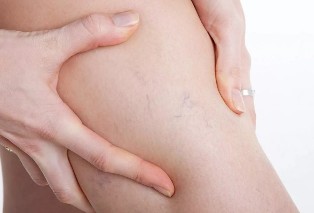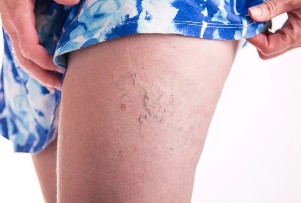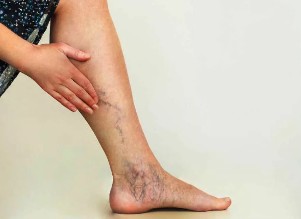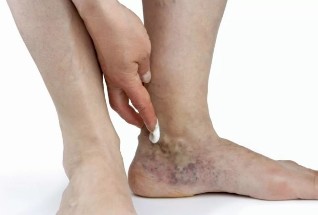Varicose veins — this is not just a cosmetic problem. It is a serious threat to the health and even life. As soon as the first signs of the disease, you must consult a doctor and start the treatment.

We are going to see what are the methods of treatment that can offer the medicine.
A modern approach to the treatment of varicose veins
Difficult to underestimate the prevalence of this pathology, in fact, according to statistics it affects about 75% of women and 60% men. And it is only among the inhabitants of developed countries. To explain the reason for the appearance of varicose veins, you should have an idea on the structure of the veins of the lower limbs. The venous blood is inside of our feet, relentlessly, moves upwards, overcoming the laws of gravity, for the implementation of this process in vienna equipped with valves that prevent the liquid to descend to the bottom in the intervals between the impulses of the heart. Infringement of functioning of this mechanism causes a reverse flow of venous blood, and because of the greater number of the veins dilate, the decrease of their tone.
The first stage of varicose veins usually occurs without specific symptoms, leading to less than trivial discomfort in the area of the toe and of the "seriousness" of the evening. You may notice that the feet are tired even after small walks. On the second, the under-compensation, the stage of these symptoms are exacerbated, and are manifested by a throbbing pain, a swelling, a tingling sensation in the legs, cramps.
The third, clearing the stage is characterized by irreversible changes of the skin of calves:
- the water retention that descend even after sleep;
- the hyperpigmentation;
- indurate — persuading the joints of the skin.
The piderme is easily vulnerable, it is possible to varicose veins, eczema and as a final trophic disorders, ulcer. The ignorance of the pathology threat of such complications, as a thrombophlebitis and thrombo-embolism.
As you start earlier the treatment, all the more encouraging will be the prognosis. But after this success, you must adjust the modes of life, allowing time for procedures of prevention.
A hint of varicose veins should be the occasion for the beginning of the visit to the doctor, who can help you identify the disease and determine its stage.
The diagnosis — the first step to recovery

First of all, a specialist examines the patient is necessary for the collection of the history. Then, after the inspection and palpation affected by the disease of areas. For more detailed and accurate diagnosis apply duplex ultrasonography angio-scan with color mapping of blood flow. The procedure resembles a simple ULTRASOUND — the only difference is that, in addition to the size of the images the doctor sees the speed and the direction of the mapping of blood flow in the vessels. Modern ULTRASOUND devices allow to precisely define the broken gates, the sites of the vein of pathological the direction of movement of the blood, as a mark of their projection on the skin.
Once the diagnosis is updated, it is time to begin to take steps to get rid of varicose veins.
The conservative treatment of varicose veins
Using non-surgical methods can prevent, inhibit or facilitate the course of the disease. As the main method of treatment they used in this case, if the operation is not possible.
The conservative methods include:
- Compression therapy is the use of a compression machine or bands request for information. Their reduced impact of vienna, and to facilitate the operation of the valve and improving blood circulation. The effectiveness of the compression therapy is proven by numerous studies. There are contra — indications - among them, atherosclerosis, aortoarteritis, inflammatory diseases of the skin and other.
- The medical treatment involves the use of medications for the reception inside, and for local application (in the form of ointments). The groups of drugs for the treatment of varicose veins on the legs are venotonic and anti-inflammatory, anti-coagulants (to thin the blood). The necessary medications to a doctor prescribed individually. It is important to remember that everyone has contra-indications. For example, most tablets venotonic can not be taken at the beginning of the pregnancy and breastfeeding. And when taking anticoagulants should regularly tests the clotting of the blood.
As the primary treatment in the absence of obstacles and contra-indications are prescribed one of the treatment options fast.
Traditional operation (venectomy)
At the present time is only used in some cases of special structure of veins or complex evolution of the disease, for example, several forms of thrombophlebitis acute.

The operation consists in the ligation of the place where the trunk is affected by the saphenous vein in a system (crossectomy) and the continuation of mechanical to remove the trunk. The manipulation is done under general anesthesia or with a spinal anesthesia and lasts for 1 to 2 hours. Due to the high frequency of post-operative complications — hematomas in the site of the deletion of the trunk of a long-term pain syndrome, neuralgia, and paraesthesia (numbness) — recently, the traditional surgical intervention is giving way to modern methods. It is a endo-venous laser photocoagulation.
After the surgery recommend regular motor activity without charges, for half a month, shows the compression of the therapy.
In addition to this method of treatment, there are other, more "forgiving" means to get rid of varicose veins on the legs.
Of minimally invasive methods
There are several varieties of less traumatic methods of treatment of varicose veins. On the basis of the data concerning the patient and the characteristics of the disease, the treating physician takes the decision to undertake any of the procedures.
Endo-venous laser photocoagulation
The operation endo-venous laser coagulation has become the method of treatment of varicose illness of any degree of severity. Neither the severity of the venous insufficiency, or the thickness of the venous lumen of the trunk at the present time are not restrictions for the endo-venous laser coagulation. This has been possible thanks to the use of the following tools:
- the two wavelengths of the lasers with the absorption of a wavelength of the hemoglobin, and the second vascular wall;
- the radial fibers, which ensures the treatment of the circumference of the entire inner surface of the vein;
- automatic pump, to inflate the solution of anesthetic around vienna, ensuring the management of the pain, reduce the diameter of veins, the protection of the adjacent tissues.
Special training in endo-venous laser coagulation is not required. Before the operation, necessarily carried out by ultrasonic duplex scanning. Also need a blood donation standard preoperative set of analyses: the common, the chemistry, coagulogram.
During the procedure the doctor needled the vienna, after which introduced thin (1 mm thick) of a catheter with fiber. The whole of this process, as well as the position of the flat tip in the vienna and the continuation of the "brewing" vienna-controlled intraoperatsionnim LINKS-machine. The operation lasts approximately 40 minutes and requires only a local anesthesia.

After a hospital stay is not necessary, the patient must wear a compression garment in a period of 3-5 days, and lasting for two weeks recommend daily walks quiet.
Radiofrequency ablation
The operation is essentially similar to the laser coagulation. The only difference is that on the wall of the vein to his "fence" and the resorption act of the radio-frequency radiation. A special training, standard pre-operative is not necessary.
At the present time in the framework of the improvement of the laser systems no advantage endo-venous laser coagulation radiofrequency ablation has not. However, the procedure is more expensive due to higher price of the probe.
The operation can not be carried out in the period of pregnancy and lactation, atherosclerosis of the board of trustees of the arteries of the lower limbs and of the impossibility of monitoring the motor activity.
The possible complications and the services of rehabilitation for the rehabilitation period are identical to the previous procedure.
Mini-phlebectomy
The principle of the operation is to remove the tributaries and the nodes of vienna through perforations or incisions in the skin using special tools. Its use in the sandbox the varicose tributaries or the procedure after the laser coagulation, radiofrequency ablation or phlebectomy.
The preparation is similar to the previous procedures, a standard set of analyses, as well as ultrasound of the veins. Contraindications - pregnancy and breast-feeding, infectious diseases, thrombophlebitis, violation of the motor activity of the pathology of clotting.
The duration of the mini-phlebectomy is 20 to 40 minutes, in the period of rehabilitation is necessary to wear compression stockings.
Sclerotherapy
Non-surgical method of treatment of varicose veins is suitable for varicose veins, and cosmetic purposes for the destruction of vascular "stars" and "veins".

The against-indications are thrombophlebite individual of allergic reactions, infections, pregnancy and lactation, the impossibility of making a precise injection.
Sclerotherapy consists in the introduction into a vein by puncture with a special substance that sticks to the wall of the vessel, for by the suite is past its resorption. One of the latest innovations of method foam-foam, which involves the use of sparkling form of medicine. Thus, it is to a lesser extent, washed by the blood, which makes it possible to decrease the concentration and the quantity of the substance to the improvement of the efficiency. The operation was performed without anesthesia, as well as for the puncture only need a thin insulin needle.
The side effects of sclerotherapy may be attributed to the pigmentation, which appears on the road sklerozirovanie of vienna. In some cases, may be incomplete collage of vienna, which requires recovery procedures.
After sclerotherapy, you should wear a compression garment, as well as to avoid the physical effort and a high temperature (for example, during the visit to the sauna).
The price of sclerotherapy depends on the type of volume. In order to eliminate the varicose veins of the trunks of sclerotherapy is now rarely used. But the session of the sclerotherapy of small nodes or venous grids will cost from 7 000 to 20 000 rubles.
With the development of medicine in the fight against varicose veins on the legs is increased from the category "Hundred years war" in the category of "quick wins". Complex surgical methods have been replaced by procedures minimally invasive, safer and more efficient. Today, varicose veins — is not a condemnation, but only an opportunity to speak to a specialist.
























